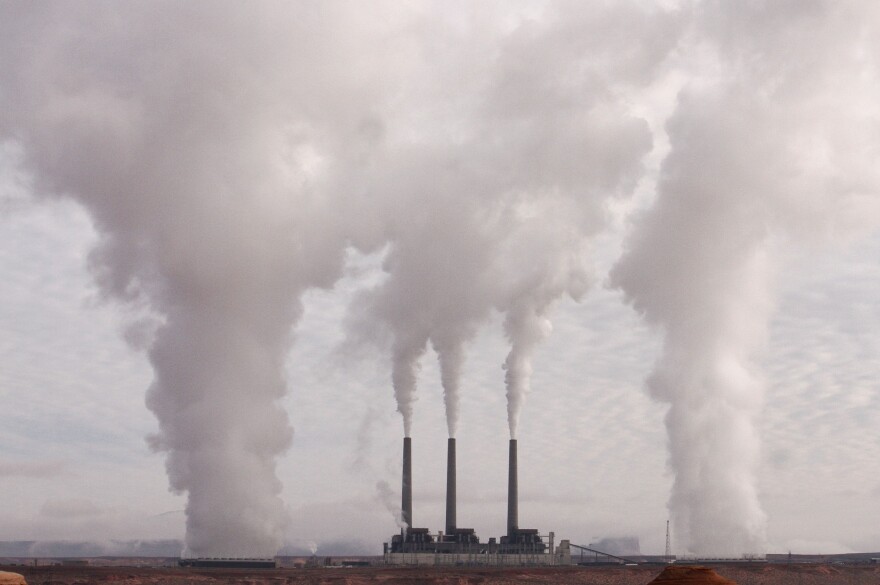New York has made mixed progress — and Connecticut made minimal progress — in reducing air pollution, according to the American Lung Association’s annual “State of the Air'' report.
Ozone and particle pollution in the air has kept the two Northeastern states closer to the top of the list for most polluted areas in the U.S. However, the New York metropolitan area might not entirely be to blame.
“We are getting pollution here that comes from the midwest coal-fired power plants. The pollution that is being put out by those plants travels across the country and settles over this region, it is a mixture of locally produced pollution as well as cross state pollution,” said Michael Seilback, the national assistant vice president for state public policy for the American Lung Association.
Where The Region Ranks
The report, which analyzed the most recent data from 2017-2019 to grade the air quality for all 50 states and counties plus the major cities, found that the ozone levels in both New York and Connecticut, more specifically New York City, Long Island and Fairfield County, Connecticut, all remain ranked high on the list for most polluted areas.
Data shows Fairfield County is the 19th most polluted county in the U.S. for ozone pollution, the only non-western county in the top 25, while the New York-Newark metro area, including New York, New Jersey, Connecticut and Pennsylvania, ranked 14 most ozone polluted metro areas.
Ozone pollution — created from heat and sunlight reacting with nitrogen and volatile organic compounds — is worse on hot summer days. Particle pollution consists of tiny particles in the air that come from factories, plants, vehicles and other pollutant machines.
“When ozone gas is breathed into the lungs, it is almost creating a chemical reaction on the lung tissue, it has been compared to getting a sunburn on your lung tissue. Particle pollution when it is breathed into the lungs, it has been compared to rubbing sandpaper on the lungs,” Seilback said.
By The Numbers:
- The New York City metro area places first in total population with pediatric asthma cases (379,882), adult asthma cases (1.6 million), chronic inflammatory lung disease (1 million), and people living in poverty (2.5 million) — and disproportionately impacting people of color.
- Nationally, of the 135 million people that live in places with unhealthy ozone pollution, 70 million are people of color. This is in large part because most cities are home to people of color and lower income communities and these cities tend to have low air quality, especially New York CIty.
Living Downwind
Part of the reason the Northeast region has bad pollution levels is due to the sheer amount of transportation around New York City, the factories of New Jersey and the wind that picks up emissions from factories and plants out west.
“Not only did this year’s report show worsened particle pollution and ozone for the area, but it reinforced what we already know: that people of color are significantly more likely to breathe polluted air,” said Trevor Summerfield and Ruth Canovi, the association’s directors for advocacy in New York and Connecticut, in a joint statement. “Our elected officials must take bold action now recognizing climate change, and its impact on worsened air pollution, as a serious public health concern.”
The association has lobbied for New York to join Connecticut, Massachussettes and Rhode Island in the Transportation and Climate Initiative (TCI). The initiative aims to bring the patchwork of East Coast states together in a commitment to energy efficiency and clean energy issues to reduce carbon emissions.
“The TCI is a proposal which will drastically reduce carbon emissions in the states that will move forward,” Seilback said. “When implemented the TCI will drastically improve our air quality because we know transportation is a major contributor to air pollution to our region. It is a policy solution to the fact Suffolk County residents continue to be exposed to unhealthy levels of ozone pollution.”
Pandemic Air Quality
During the beginning of the COVID-19 lockdowns, many cities saw dramatic decreases in transportation. That reduction of cars on the road are not included in the association's report.
“It's hard to guess what we will see in the next year's report obviously when we were first working from home and everyone was staying home due to the beginning stages of the pandemic you saw a lot of reports of the air being cleaner,” Seilback said. “As time has gone on it may not have lasted much. It did show we do have a major impact on the air we breathe, when people weren’t spending so much time in our vehicles.”
Particle and ozone pollution can cause health problems, and individuals with pre-existing medical conditions are at a greater risk of illness and death due to exposure from these pollutants. This year's report includes data that suggests year-round exposure to particulate matter has a direct correlation to early mortality.
“Across numerous seminal studies that looked at different groups of people living in different parts of the country, the results consistently showed a clear relationship between exposure to particle matter and mortality,” the report said.
Long-term exposure to ozone pollution and particulate matter can have effects on both children and adults.
“There are findings that suggest it can affect the central nervous system with increase in cognitive decline and a risk to very young children with increased risk with developmental problems in pregnant women who were exposed leading to increased preterm births and low birth rates,” said Dr. David Hill, director of clinical research with Waterbury Pulmonary Associates and national spokesperson for the American Lung Association.
Health officials have said these pre-existing conditions, especially respiratory illness, put people at higher risk for coronavirus.

